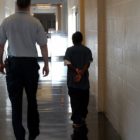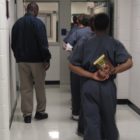
California: Is this how you want your kids to be treated?
|
“How would you want your kids, if they were in these facilities, to be treated?”
That question was raised by formerly incarcerated youth and current juvenile justice advocate James Martinez at a meeting of California’s Board of State and Community Corrections. The BSCC is a state agency tasked with overseeing jails and county-level juvenile facilities in California. In early November 2022, the board’s Executive Steering Committee, met to begin rewriting critically important rules governing juvenile camps, ranches and halls.








